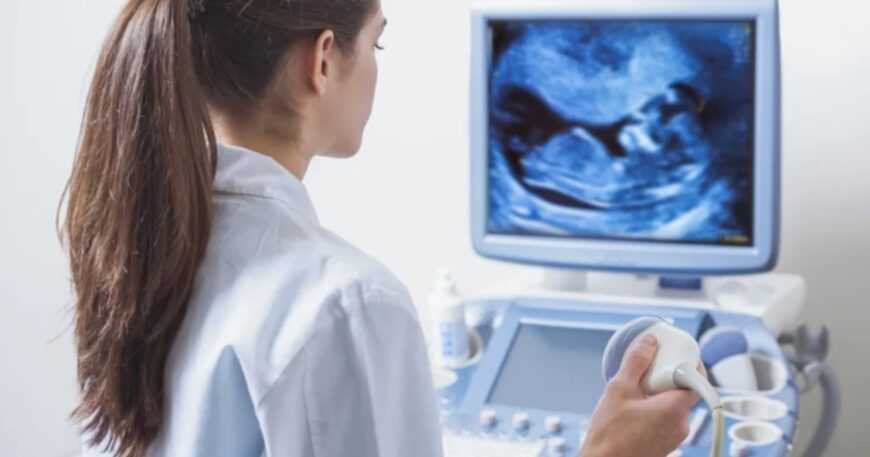
Understanding CTG Machines: Technology Behind Fetal Monitoring in Pakistan
Pregnancy is a time of careful monitoring and ongoing care. Among the many tools used to ensure a baby’s health before birth, CTG machines play a vital role. These machines help doctors track a baby’s heartbeat and the mother’s contractions, making it easier to detect problems early. In Pakistan, hospitals like Shaafi Hospital Alipur rely on CTG technology to improve patient safety and guide delivery decisions.
What Are CTG Machines?
CTG machines, short for Cardiotocography machines, are electronic devices used to monitor a baby’s heartbeat and the mother’s uterine contractions during pregnancy. These machines are commonly used in the third trimester and throughout labor. They offer a real-time look at how the baby responds to the natural stress of labor and movement.
The term CTG monitoring refers to the process of using these machines to gather information. The goal is to ensure the baby is getting enough oxygen and is not in distress.
Each machine has two sensors:
- One tracks the baby’s heart rate using ultrasound
- The other detects contractions using a pressure sensor
These sensors are attached to the mother’s abdomen using soft elastic belts. The data is displayed on a monitor or printed for doctors to review.
How Do CTG Machines Work?
The basic principle behind CTG machines involves detecting and displaying patterns in fetal heart rate and uterine contractions. During a CTG procedure, the machine records the heart rate in beats per minute and matches it with the timing of contractions.
Doctors look for:
- A normal heart rate between 110 and 160 bpm
- Variations in the heart rate (which show a healthy response)
- Accelerations (brief increases) or decelerations (drops) in heart rate
This is known as CTG electronic fetal monitoring, and it helps predict if a baby is under any stress. If the readings are abnormal, doctors may recommend further testing or even early delivery.
CTG Test in Pregnancy and Its Importance
In many cases, a CTG test is recommended if there are any signs of complications. This includes reduced fetal movement, high blood pressure, diabetes, or a previous high-risk pregnancy. The CTG test in pregnancy normal range is a helpful reference to decide if everything is going smoothly.
The test is usually done in a quiet room where the mother can rest while connected to the CTG machine. It typically lasts 20 to 40 minutes. Longer tests may be needed if the baby is not active or if the results are unclear.
At Shaafi Hospital Alipur, CTG tests are part of our standard maternity care and follow nice guideline ctg monitoring protocols.
Technology and Advancements in CTG Monitoring
Modern CTG machines are far more advanced than older models. They now include digital screens, data storage, and even wireless options. Some machines allow remote access, so specialists can view results from another location. This is especially useful in areas where doctors may not be physically present at all times.
CTG monitoring is also paired with other tests like ultrasounds to provide a complete picture of fetal health. When used correctly, it can significantly reduce complications during labor and delivery.
CTG Machine Price in Pakistan
The CTG machine price in Pakistan varies depending on the brand, features, and whether it’s new or refurbished. On average:
- Basic models start around PKR 250,000
- Mid-range models with printouts cost between PKR 350,000 to PKR 500,000
- High-end digital machines can cost up to PKR 1 million
Hospitals like Shaafi Hospital Alipur invest in high-quality machines to ensure accuracy, safety, and patient comfort. While price is a consideration, the long-term benefits of early detection far outweigh the initial cost.
What Is CTG in Pregnancy?
Many parents ask, what is CTG in pregnancy? It’s an essential test that helps identify whether the baby is getting enough oxygen during pregnancy and labor. It is especially important in:
- High-risk pregnancies
- Post-term pregnancies
- Cases where the mother has health conditions like hypertension or diabetes
CTG machines provide continuous or intermittent monitoring based on the situation. The readings allow doctors to intervene early if the baby shows signs of stress.
Safety and Accuracy of CTG Monitoring
CTG monitoring is a safe and non-invasive method. It doesn’t use radiation and poses no risk to the baby or mother. While the test results must be interpreted by trained professionals, the data collected by modern machines is highly reliable.
Shaafi Hospital Alipur follows the manual of diagnostic ultrasound and fetal monitoring procedures to make sure no important signs are missed. If needed, CTG results are paired with other tests for better decision-making.
CTG Monitoring vs. Other Tests
Sometimes, people confuse CTG with other pregnancy scans or therapies. It’s important to understand the difference between therapeutic ultrasound and diagnostic ultrasound. While therapeutic ultrasound is used in physiotherapy to treat injuries, diagnostic ultrasound and CTG monitoring are used to assess a baby’s health.
Both play vital roles, but CTG machines are specially designed for fetal care. They don’t replace ultrasound but complement it by offering continuous heart rate tracking.
The Role of CTG Machines at Shaafi Hospital Alipur
At Shaafi Hospital Alipur, we use CTG machines in every labor ward and high-risk maternity case. Our staff includes trained nurses and obstetricians who are well-versed in diagnostic ultrasound equipment, CTG procedures, and pregnancy management.
We ensure that:
- Every test is conducted in a safe, private environment
- Patients receive explanations of their results
- All monitoring follows international standards
Our priority is the well-being of both mother and baby, and CTG technology helps us achieve that goal.
FAQs
Q1: Is CTG monitoring necessary for all pregnancies?
Not always. It is usually done for high-risk pregnancies or during labor.
Q2: Is the CTG machine safe to use?
Yes, it’s a safe and non-invasive device used worldwide.
Q3: How accurate are CTG results?
Very accurate when interpreted by experienced medical staff.
Q4: Can I move during a CTG test?
Light movement is allowed, but you may be asked to stay still for accurate readings.
Q5: Does CTG monitoring hurt?
No, it’s completely painless and usually takes less than 40 minutes.
Conclusion
CTG machines have become a critical part of modern maternity care. Their ability to detect changes in fetal heart rate and maternal contractions helps doctors make informed decisions during pregnancy and delivery. In Pakistan, where access to timely care can be a challenge, reliable CTG monitoring can make a significant difference.
At Shaafi Hospital Alipur, we are committed to using the best technology and following global care standards. Whether you are going through a routine check-up or facing a complex pregnancy, our expert team and state-of-the-art machines ensure that you and your baby are in safe hands.
